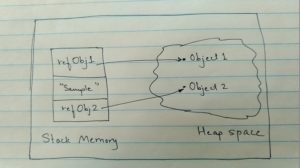Yes, this will be the post where we dissect the skill of programming. Recently I came across a lot of beginner’s questions from friends and families who want to get into programming. But also if I want to go back in time and want to give advice to 10 years younger me, what advice would I give? How would I approach programming skills differently compared to what I did?
Before I move forward, if you want to read design patterns, you can visit that link.
Why does programming matter?
Most of us are not born programmers or smart enough to gauge our ability to sit in front of a computer for hours and write something in a completely foreign language to mankind. Programming is definitely not foreign anymore, but there are still a lot of people in the world, who don’t know anything about how computers work. They want to use computers, but don’t care about how computers operate.
I will not cover how computers work in this topic, but want to remind everyone that when we designed computers back in 50s and 60s, one purpose was that it could help us to solve some of the complex problems we face. Computers have exceeded the expectations and there is a speculation that in near future, all mundane jobs will be replaced by artificial intelligence. Artificial intelligence is only possible when the programming continues to evolve and it has been. There are lot of curious people in our world and this mere mortal is one of them. For me, it was curiosity that drove towards computers and slowly i embraced the internals and ideas about computer. It was fascinating always. To answer the question, in short, to continually evolve as mankind, we need technology and technology is the fastest evolving paradigm which is majorly based on programming.
What’s your purpose for programming?
You don’t really need a purpose to program. I started with programming mundane algebraic functions . It was continuous improvement from that moment to solve some of the complex mathematics problems to engineering problems to real world business problems. Despite all that, there are lot of system level problems in computers that need attention. You can even choose a purpose of fun. Lot of programmers started programming for fun and built some of the coolest games. No purpose is still a purpose till the time you allocate certain time to improve your skill. It’s been 15 years from the time I have graduated from college, but I have not stopped programming and I am no where close to say that I am the best. You will never be the best, you will continually improve and that’s the aim you should have. Learn from all sources.
How to learn the skill of programming?
This is a broad topic. Learning how to learn itself covers lot of intricacies. How to learn programming. I will try to narrow down discussion about this in few steps
- Learn basic syntax, but not all of the syntax. You will learn this over the time.
- Learn programming principles, mostly object oriented principles.
- Find out common patterns and study them. In software engineering, we follow lot of design patterns and they get used all the time while designing any application.
- Find out common libraries in the language that you want to learn.
- If you are learning Java, definitely read Effective Java, Clean code and Refactoring.
- Try pair programming where you work with another programmer.
- Read, read and read lots of code – bad code to good code both.
- Fall in love with learning to program, process over results.
- If you take up a project, start with MVP (Minimum Viable Product), get feedback from peers/customers and then improve on the product you are building. While following this process, you will improve your programming as well. You will hit road blocks, that will challenge you to find out the solution on your own. Balance long term process (learning programming) with short term goals (projects that you will work on).
- If you work with senior programmers, get a feedback for your code.
Resources for programming
- Solve problems on HackerRank
- Free code camp – Freecodecamp
- Participate in hackathons
- Write blogs about your insights
Conclusion
In this post, I tried to simplify a process about how to learn programming, and how to improve the skill of programming. I hope this post helps all those who are on the fence about programming to take up programming.

